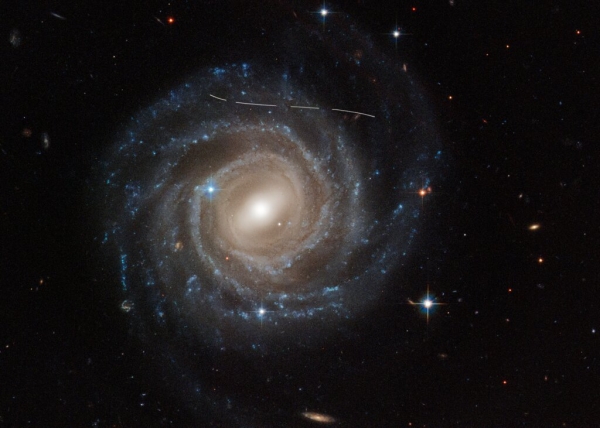Like boulders, rocks, and pebbles scattered across a landscape, asteroids come in a wide range of sizes.
Like boulders, rocks, and pebbles scattered across a landscape, asteroids come in a wide range of sizes. Cataloging asteroids in space is tricky because they are faint and they don't stop to be photographed as they zip along their orbits around the Sun.
Astronomers recently used a trove of archived images taken by NASA's Hubble Space Telescope to visually snag a largely unseen population of smaller asteroids in their tracks. The treasure hunt required perusing 37,000 Hubble images spanning 19 years. The payoff was finding 1,701 asteroid trails, with 1,031 of the asteroids previously uncatalogued. About 400 of these uncatalogued asteroids are below 1 kilometer in size.
Volunteers from around the world known as "citizen scientists" contributed to the identification of this asteroid bounty. Professional scientists combined the volunteers' efforts with machine learning algorithm to identify the asteroids. It represents a new approach to finding asteroids in astronomical archives spanning decades, which may be effectively applied to other datasets, say the researchers.
"We are getting deeper into seeing the smaller population of main belt asteroids. We were surprised with seeing such a large number of candidate objects," said lead author Pablo García Martín of the Autonomous University of Madrid, Spain. "There was some hint of this population existing, but now we are confirming it with a random asteroid population sample obtained using the whole Hubble archive. This is important for providing insights into the evolutionary models of our solar system."
Read more at NASA/Goddard Space Flight Center
Image: This Hubble Space Telescope image of the barred spiral galaxy UGC 12158 looks like someone took a white marking pen to it. In reality it is a combination of time exposures of a foreground asteroid moving through Hubble's field-of-view, photobombing the observation of the galaxy. Several exposures of the galaxy were taken, what is evidence in the dashed pattern. The asteroid appears as a curved trail due to parallax: because Hubble is not stationary, but orbiting Earth, and this gives the illusion that the faint asteroid is swimming along a curved trajectory. The uncharted asteroid is in inside the asteroid belt in our solar system, and hence is 10 trillion times closer to Hubble than the background galaxy. Rather than a nuisance, this type of data are useful to astronomers for doing a census of the asteroid population in our solar system. (Credit: NASA, ESA, Pablo García Martín (UAM); Image Processing: Joseph DePasquale (STScI); Acknowledgment: Alex Filippenko (UC Berkeley))




